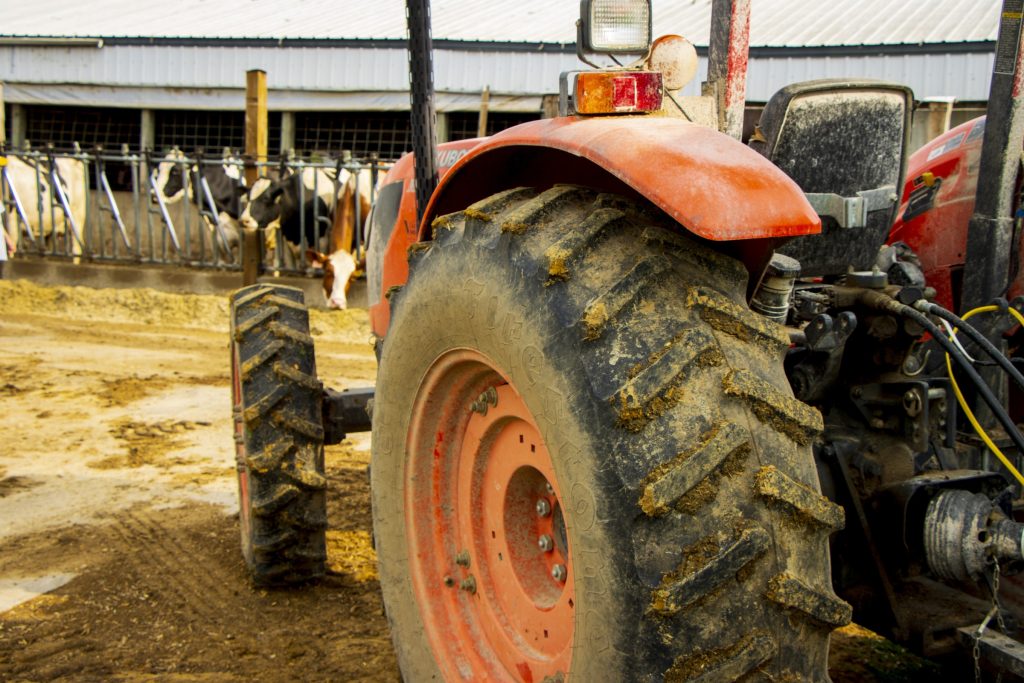Weather and climate conditions this week in Wisconsin
Here are this month’s take-home points about the weather. Scroll down for the full downloadable report.

Current Wisconsin weather and climate conditions
- Most of last week’s precipitation was concentrated down in the SE corner of the state, with totals of 1-2″
- Cooler-than-normal conditions were common across the state last week, a switch from what had been warmer-than normal conditions for much of March
Impact
- Soil moisture conditions remain driest in the northwest and south were D1 drought persists. However, drought improvements of 1 class were prevalent across the north in part due to the later winter storm
- Wildfire risk is moderate to high across most of the state, except for the far north where recent precipitation has been higher
- Wisconet soil temperature readings at 20″ depth are at or above freezing statewide. Frost continues to thaw
Outlook for Wisconsin weather and climate
- Statewide chances for 7-day precipitation: highest chances in the south with a rain/snow mix to impact the region on Wednesday (4/9)
- As we head into mid-April, temperature probabilities are leaning toward near normal with precipitation probabilities leaning toward above normal
- April as a whole looks more uncertain for temperatures and precipitation with equal chances for above, near or below normal
Agronomic considerations
- Field Work and Conditions
- Soil temperatures to 4″ still cool, ensure temps are reaching 50°F at a minimum before planting. See WiscoNet. Also note upcoming insurance dates.
- Avoid trafficking fields in moist conditions to prevent compaction and rutting.
- Avoid fertilizer applications in wet and cool conditions. Nitrogen loss is greater in wet conditions.
- In drier regions of the state, consider earlier termination of cover crops to retain soil moisture if conditions remain dry.
- Manure Applications
- Reminder of Wisconsin’s NR 151 Runoff Rules with the timing of manure spreading and current runoff levels. Check DATCP Runoff Risk Advisory Forecast.
- Pest Management
- Start scouting fields by foot to note any early emerging weeds.
- Forage Management
- Check alfalfa fields for signs of winterkill.
- Small Grains
- Assess winter grain stands.
- If warmer weather continues, there is potential for early planting of spring grains, but be aware of continuing possibility of freeze.
- Livestock Considerations
- Keep livestock out of critical and sensitive areas with soft, muddy ground, see this article on the value of keeping cattle clean.
- Regulate body temperature and wetness of calves. Make sure dry bedding (e.g., hay, grass) is available to keep calves dry.
- Specialty crops- vegetables
- Small scale producers may consider tarping fields with adequate (but not excessive) soil moisture to avoid spring rains for later planting.
- Winter cutworms are active at 40°F- check high tunnel crops ( ex: overwintered hardy greens and direct seeded spring greens) for cutworm damage
- Winter cutworms in high tunnel crops – Cornell University
- Asparagus cultivation can occur in early spring (very shallowly- less than 2 inches) before spears emerge to control bad weed problems or incorporate fertilizer.
- Specialty Crops- Fruit
- Pre-emergent herbicide applications should be applied prior to green tip, during a dry period where temperatures will remain above 40°F for several days post-application.
- Importance of Spring Herbicide Applications in Fruit Trees– Michigan State University
- Dormant copper and urea applications used to reduce fire blight and apple scab inoculum should be applied prior to green tip.
- Early Season Disease Prevention– UW–Madison
- Prune out damaged, dead or diseased tissue and remove any fruit mummies from the tree canopy prior to green tip. Growers can chop, bury or burn (where permitted) prunings.
- Sanitation for Disease Prevention – UW–Madison
- Pre-emergent herbicide applications should be applied prior to green tip, during a dry period where temperatures will remain above 40°F for several days post-application.
If you would like to obtain a PowerPoint copy of this report, please email rue.genger@wisc.edu.




